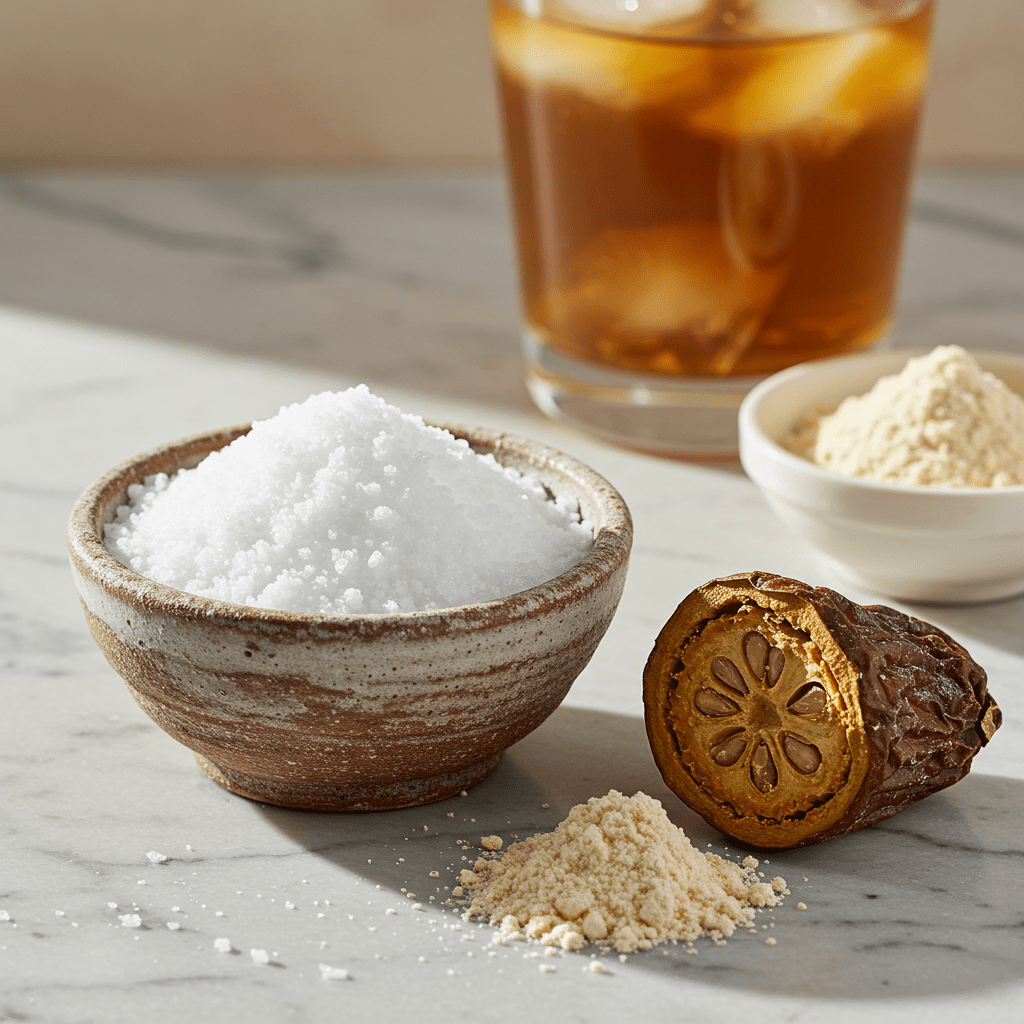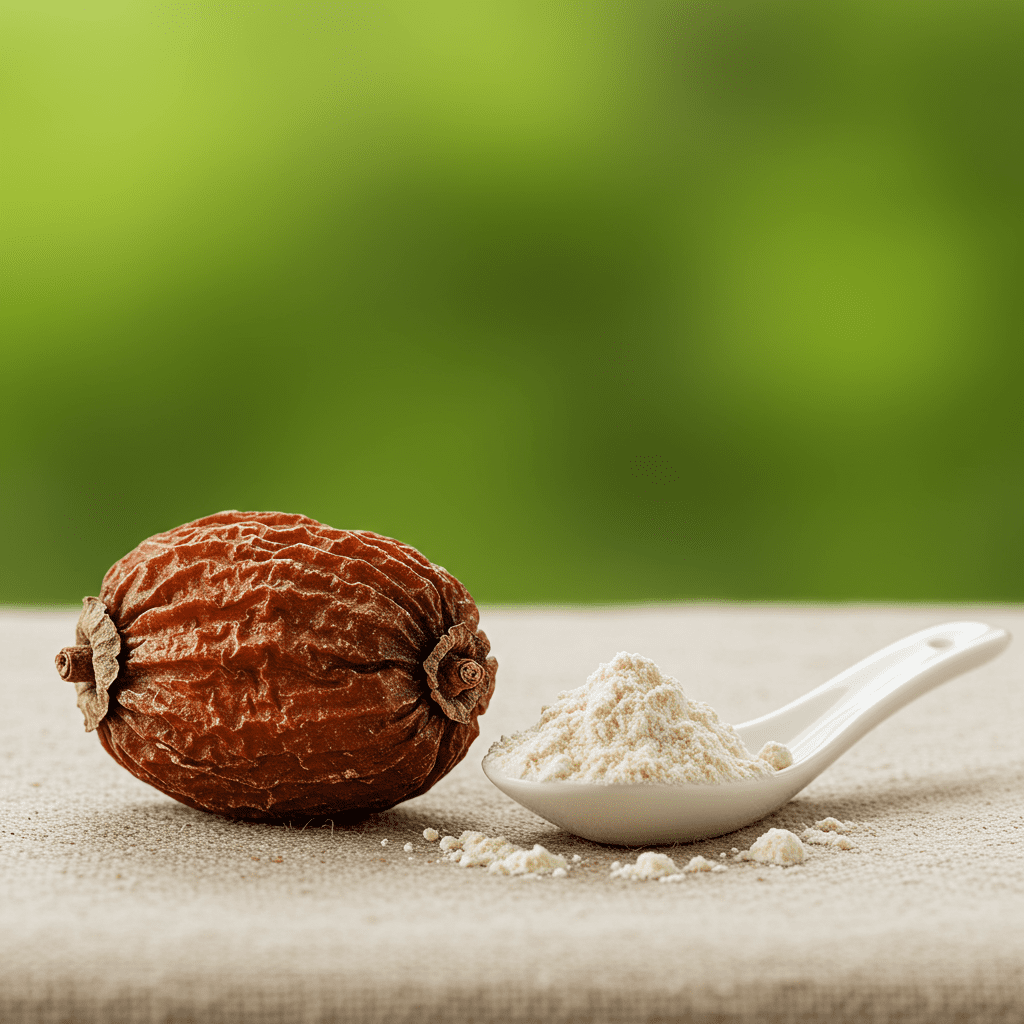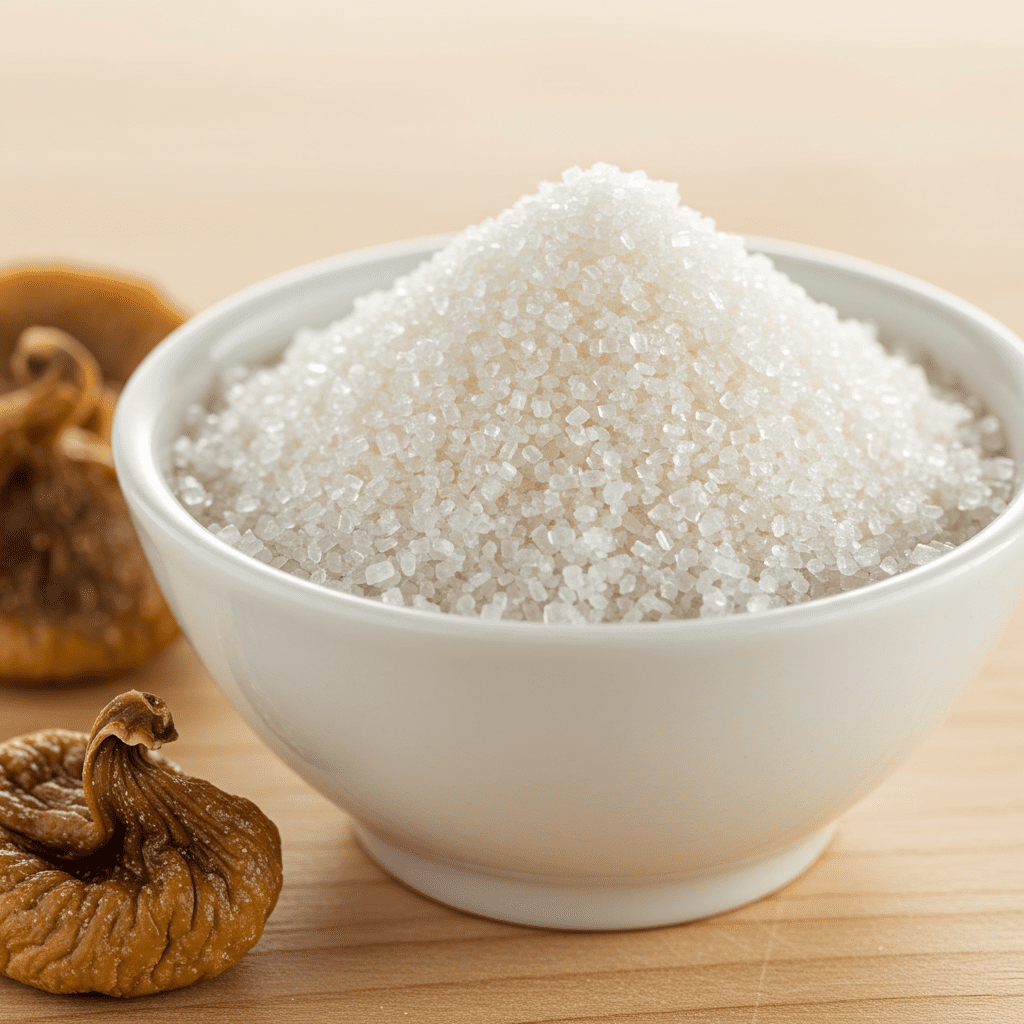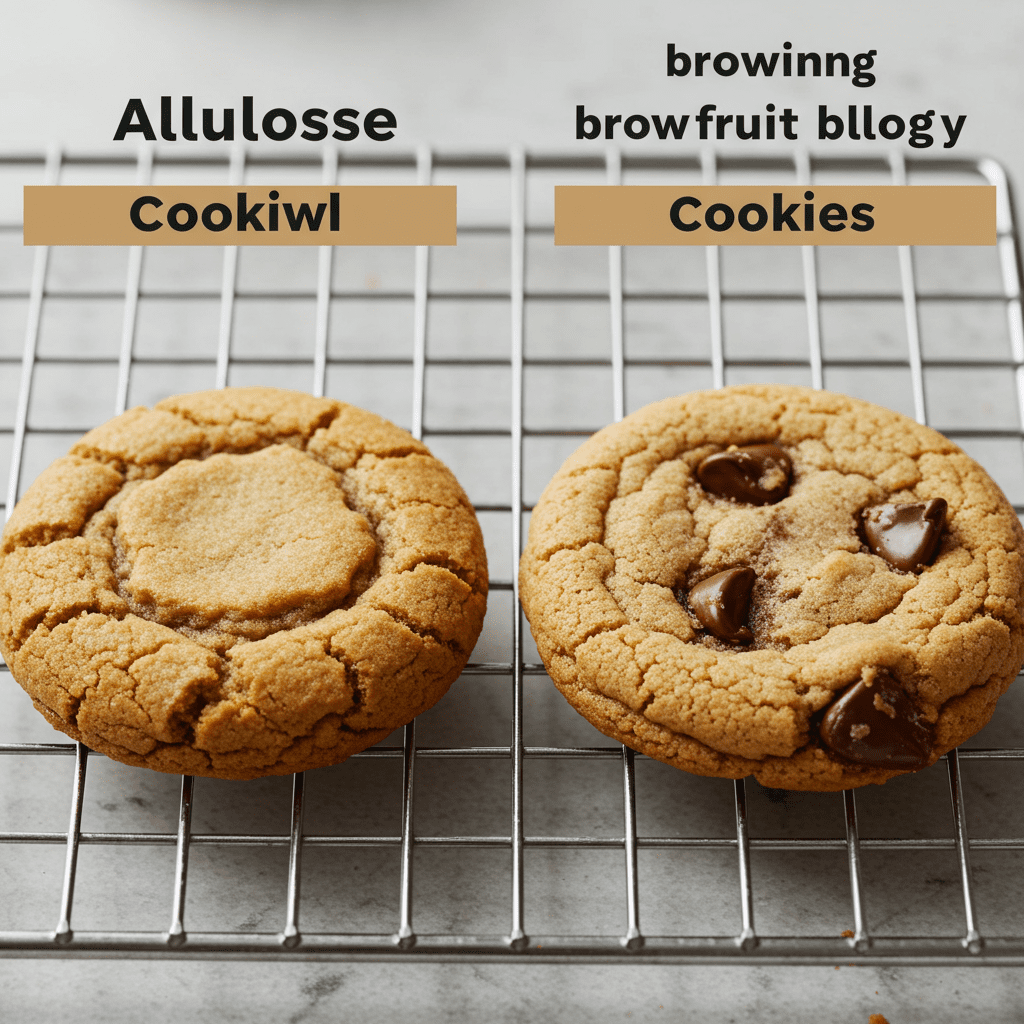Allulose vs Monk Fruit: A Dietitian’s Guide to Choosing the Healthiest Sugar Substitute

In the ever-expanding world of sugar alternatives, allulose and monk fruit have emerged as front-runners, promising the sweetness we crave without the calories or blood sugar spikes.
But with so much conflicting information out there, choosing between them can feel overwhelming.
You’re looking for a healthier option, but you also want something that tastes good and actually works in your favorite recipes.
As a registered dietitian and food wellness expert, I’m here to cut through the confusion.
We’ll dive deep into the science behind these two popular sweeteners, comparing them on everything from metabolic health to baking performance.
By the end of this guide, you’ll have a clear, confident understanding of which one is truly the better fit for your lifestyle.
- What Exactly is Allulose?
- What is Monk Fruit Sweetener?
- How Do They Affect Your Blood Sugar?
- Let’s Talk About Gut Health and Digestion
- Which One is Better for Cooking and Baking?
- What’s the Real Difference in Taste?
- Are Allulose and Monk Fruit Safe?
- A Dietitian’s Verdict: Which Should You Choose?
- Conclusion
What Exactly is Allulose?

Allulose is often called a ‘rare sugar’ because it’s found naturally in small amounts in foods like figs, raisins, and wheat.
Despite its rarity in nature, the allulose you buy is typically produced commercially by converting fructose from corn or other starches through a specific enzymatic process.
Structurally, it’s almost identical to table sugar, which is why it behaves so similarly in cooking.
However, there’s a key difference.
Your body doesn’t recognize it as a typical carbohydrate.
It’s absorbed but not metabolized, meaning it contributes negligible calories and doesn’t impact blood glucose.
The FDA has acknowledged its unique properties, allowing it to be excluded from the ‘Total Sugars’ and ‘Added Sugars’ lines on nutrition labels, a significant advantage for food manufacturers and health-conscious consumers.
What is Monk Fruit Sweetener?

Monk fruit, or • luo han guo, is a small green melon native to Southeast Asia.
Its use as a natural sweetener dates back centuries in traditional practices.
Unlike other fruits, monk fruit’s intense sweetness doesn’t come from its sugars (like fructose or glucose).
Instead, it comes from powerful antioxidants called mogrosides.
To make the sweetener, the fruit’s juice is extracted, and the mogrosides are isolated, purified, and dried into a concentrated powder.
This is why monk fruit is considered a ‘natural, zero-calorie sweetener.
‘ Because it’s 150-250 times sweeter than table sugar, it’s often blended with other ingredients, like erythritol or allulose itself, to provide the necessary bulk for baking and to mellow out its intense sweetness.
How Do They Affect Your Blood Sugar?

This is where both sweeteners truly shine, especially for individuals managing blood sugar.
Because allulose is not metabolized by the body, numerous studies confirm it does not raise blood glucose or insulin levels.
A 2018 study published in • PloS one found that consuming allulose not only failed to raise blood sugar but also helped suppress the glycemic response to other carbohydrates consumed with it.
Similarly, monk fruit’s sweetness from non-caloric mogrosides means it also has a glycemic index of zero.
As I advise my clients with insulin resistance or diabetes, both are safe and effective tools for enjoying sweetness without disrupting blood sugar control, a key component of building satisfying meals that keep you full until lunch.
Let’s Talk About Gut Health and Digestion
Our gut health is foundational to overall wellness, so it’s important to consider how these sweeteners are tolerated.
With allulose, a small portion that isn’t absorbed in the small intestine travels to the large intestine, where it can be fermented by gut bacteria.
For most people, this is a non-issue in moderate amounts.
However, research indicates that consuming very large quantities (generally more than 30-50 grams per day) can lead to digestive side effects like bloating, gas, or diarrhea.
Monk fruit, on the other hand, is generally considered very well-tolerated.
The mogrosides are primarily processed differently without fermentation, so it rarely causes digestive distress, even in sensitive individuals.
If you have a sensitive gut or IBS, monk fruit may be the gentler choice.
Which One is Better for Cooking and Baking?
From a food science perspective, this is where the differences become most apparent.
Allulose is a star performer in the kitchen because it functions remarkably like sugar.
It provides moisture, browns beautifully through the Maillard reaction, and can even caramelize.
This makes it ideal for baked goods like cookies, cakes, and muffins where you want that classic golden-brown color and soft texture.
It’s about 70% as sweet as sugar, so you may need to use slightly more.
Monk fruit’s power is its intense sweetness, making it perfect for sweetening beverages, sauces, and frostings where a little goes a long way.
However, pure monk fruit extract doesn’t provide bulk or browning, which is why it’s almost always sold as a blend.
If you use a monk fruit blend, your results will depend heavily on the bulking agent it’s mixed with (often erythritol, which can sometimes crystallize when cooled).
What’s the Real Difference in Taste?
Taste is subjective, but there are common experiences.
Allulose is widely praised for having a taste profile that is remarkably clean and similar to sugar.
It has virtually no aftertaste, which is a major reason for its growing popularity.
Monk fruit is much sweeter, and some people detect a slightly fruity or lingering aftertaste, particularly if too much is used.
This is less noticeable in commercial products that use carefully balanced blends.
If you are highly sensitive to the aftertaste of other sweeteners like stevia, you will likely find allulose to be a more neutral and pleasant option.
Are Allulose and Monk Fruit Safe?
Safety is paramount when considering any food additive.
Both allulose and monk fruit are ‘Generally Recognized as Safe’ (GRAS) by the U.
S.
Food and Drug Administration (FDA).
This designation means that based on all available scientific evidence, experts have concluded the substance is safe for its intended use.
For allulose, the FDA reviewed extensive toxicological data before issuing GRAS notice No. 498.
Monk fruit also has a long history of safe use and was affirmed with GRAS notice No.
769.
While long-term human studies are still emerging due to their relative novelty in the Western diet, the current body of evidence and historical use support their safety when consumed in moderation as part of a balanced diet.
A Dietitian’s Verdict: Which Should You Choose?
There’s no single ‘better’ sweetener; the right choice depends entirely on your goals and how you plan to use it.
Choose Allulose if: • You are baking and want superior browning, texture, and moisture in cakes and cookies.
You are very sensitive to the aftertaste of other alternative sweeteners.
• You don’t have a particularly sensitive digestive system.
Choose Monk Fruit if: You need to sweeten drinks, yogurts, or sauces with intense, zero-calorie sweetness.
• You have a sensitive gut, as it’s less likely to cause digestive issues.
You don’t mind that most products are blends and won’t provide browning in baking.
Conclusion
Both allulose and monk fruit are fantastic, science-backed tools that can help you reduce your added sugar intake without sacrificing sweetness.
They offer significant benefits over sugar, particularly regarding blood glucose control and dental health.
Allulose wins for its sugar-like performance in baking, while monk fruit offers potent, well-tolerated sweetness.
The best approach is often a practical one: use the sweetener that best fits the occasion.
You might find that allulose is your go-to for weekend baking, while monk fruit is perfect for your daily coffee or tea, or even for creating a healthier snack mix.
Ultimately, listen to your body, consider your personal health needs, and don’t be afraid to experiment to find what works—and tastes—best for you.
